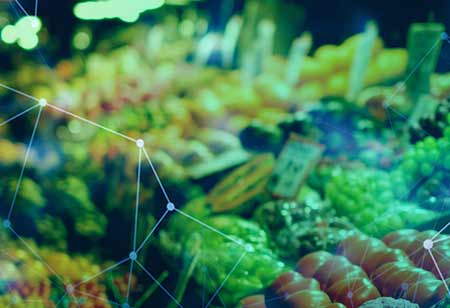THANK YOU FOR SUBSCRIBING
Be first to read the latest tech news, Industry Leader's Insights, and CIO interviews of medium and large enterprises exclusively from Food and Beverage Tech Review
Robotics: The Future of the Food Industry
Robots are now helping to optimize several complex steps in the food industry.

By
Food and Beverages Tech Review | Tuesday, July 19, 2022
Stay ahead of the industry with exclusive feature stories on the top companies, expert insights and the latest news delivered straight to your inbox. Subscribe today.
In warehouses and manufacturing plants, robots can perform dangerous tasks that might put employees at risk.
Fremont, CA: Robots are now helping to optimize several complex steps in the food industry. From the agricultural stage to restaurants, home cooking, and grocery stores, food robots have unique programming to assist with food production. Using robots, every step is ready to meet supply and demand with greater productivity and safety.
Agriculture
Agriculture is the origin of the food business. It is the source of dairy products, meat, and crops. Agricultural organizations should use robots to handle each phase of delivering these food goods appropriately.
Robots with autonomy can patrol farming fields to remove weeds and keep an eye on the condition of the crops. To feed the animals, other autonomous robots can gather eggs or milk. These machines handle the routine jobs, freeing farmworkers to handle tasks that require even more dexterity or insight.
Manufacturing
Robotics in food processing starts with manufacturing. Food processing involves a number of procedures, such as packing and safety monitoring, that gets normally performed at a manufacturing facility. The different sorts of food can first be cleaned and sorted by robots. Fruits and vegetables, for example, may be conveniently arranged into different containers using robotic arms.
Additionally, some meals can get prepared by robots prior to packaging. Since different cutting instruments are needed to chop fruits and vegetables, robots can function more effectively by matching knives to the necessary cut or switching between cutting devices quickly. Afterward, they may chop goods for supermarkets or cook meals independently.
Safety
First, robots can do risky duties that endanger workers in warehouses and industrial plants. For instance, autonomous robots can reach high areas and retrieve objects.
Food robots take care of jobs that can otherwise infect workers' health. Both severe and minor foodborne illnesses are rather prevalent. Forty-eight million Americans experience foodborne diseases each year, according to the Centers for Disease Control and Prevention (CDC).
Robots handle meats, seafood, and other things that might cause serious infections, saving time by reducing human error. Additionally, it is less probable that a robot may improperly handle or package food and result in an outbreak.
Packaging
Robotics in food processing could then assemble the components of a prepared meal, such as frozen dinners after robots produce the food. Robotic packaging solutions that are quick and effective enable workers to fulfill supply and demand demands.
Additionally, these robots can arrange the food on pallets for eventual shipping and storage. Robots that can navigate a warehouse and easily retrieve or store merchandise may soon be a regular sight.
I agree We use cookies on this website to enhance your user experience. By clicking any link on this page you are giving your consent for us to set cookies. More info


However, if you would like to share the information in this article, you may use the link below:
https://www.fbtechreviewapac.com/news/robotics-the-future-of-the-food-industry-nwid-1369.html





